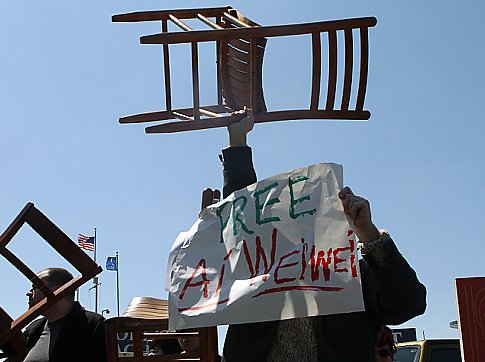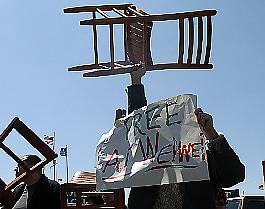Demonstrators all over the world were sitting outside Chinese embassies on Sunday demanding the release of the detained Chinese artist Ai Weiwei.

Inspired by one of Ai’s installations, a Canadian curator, Steven Holmes, appealed to artists worldwide via social networking sites to take chairs out onto the street and sit in silent protest. Thousands of people around the world did so.
As filmmaker Barbara Hammer said a the New York protest, “censorship takes many forms.” Indeed, though the arrest of an artist in punishment for his criticism of government is an extreme form of censorship, events in recent months have introduced a new urgency in confronting the problem of censorship here, in the country of free speech.
Related Links:
- NCAC statement condemning removal of Wojnarowicz video
- National Art and Free Speech Organizations Urge Smithsonian to Adopt New Policies
- https://ncac.org/Censoring-Wojnarowicz
- Culture Wars: Then And Now, at the Corcoran In Partnership with Transformer and NCAC
- LA MOCA – the false dichotomy between censorship and sensitivity
- NCAC statement of support/ petition to release Ai Weiwei: https://ncac.org/Call-For-Imediate-Release-of-Ai-Weiwei


